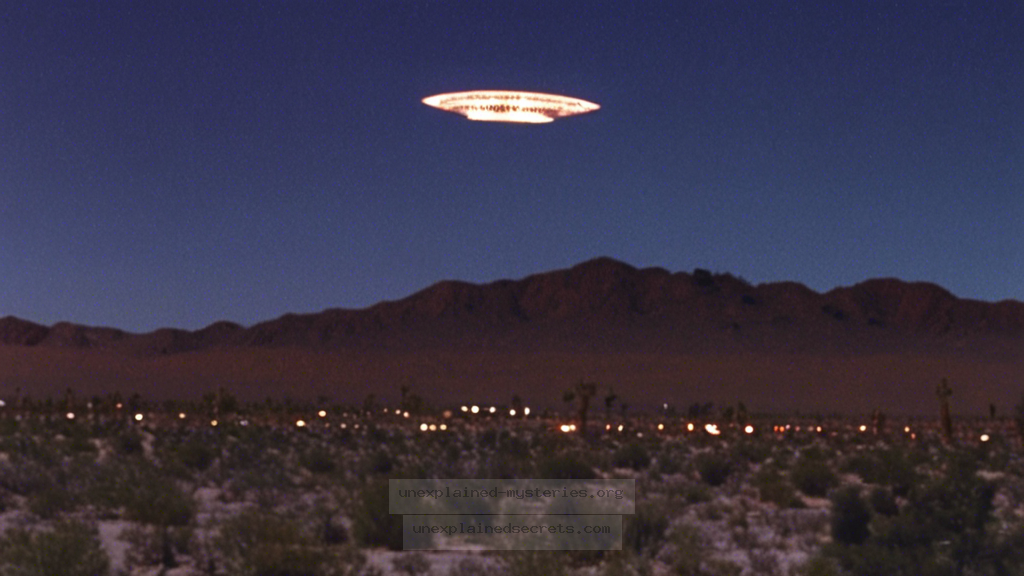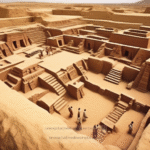What Really Happened During the Phoenix Lights Incident of 1997?
What Really Happened During the Phoenix Lights Incident of 1997?
The Phoenix Lights incident of March 13, 1997, remains one of the most compelling and extensively discussed UFO sightings in history. It has garnered the attention of both UFO enthusiasts and skeptics alike, raising questions about the nature of unidentified flying objects and the possibility of extraterrestrial encounters. This mysterious event involved thousands of witnesses and remains unexplained to this day, making it a critical subject for investigation. In this post, we will delve into the details of the Phoenix Lights, examining historical context, eyewitness accounts, prevailing theories, and ongoing implications for the field of ufology.
Historical Context: The Night of the Phoenix Lights
The Phoenix Lights were observed over a span of several hours, beginning around 7:30 PM and extending late into the night. Initially reported by a witness in Henderson, Nevada, the phenomenon quickly gained traction as more observers, including residents of Phoenix and surrounding areas, reported seeing a series of lights moving in a V-shaped formation. By the time the event concluded, thousands had claimed to witness the lights, which were described as large, silent, and moving in a way that defied conventional flying patterns.
On the night of the sightings, the military also played a role in shaping public perception. Shortly after the lights were reported, the Arizona Air National Guard conducted a training exercise involving flares, leading many skeptics to attribute the lights to military activity. However, this explanation failed to satisfy numerous eyewitness accounts, which emphasized the size and movement of the lights, characteristics that flares could not replicate.
Eyewitness Accounts: A Collective Experience
The power of the Phoenix Lights incident lies in the multitude of eyewitness accounts. Over the years, various individuals have come forward to share their experiences, many of whom were not previously interested in UFOs or the paranormal. Their testimonies range from seeing bright orbs to large, dark crafts moving silently overhead. Some of the most compelling stories come from former military personnel and civilians, who describe their encounters in detail.
One notable witness, retired U.S. Air Force Major George Filer, claimed to have seen the lights while flying his plane. He described them as “massive” and noted that they moved in a way that defied standard aviation protocols. Other witnesses included families, couples, and individuals who reported feeling a sense of awe and fear as they observed the phenomenon. This collective experience has led researchers to consider the psychological and sociological aspects of mass sightings, contributing to our understanding of how people interpret and respond to extraordinary events.
Core Concepts: What Were the Phoenix Lights?
Theories regarding the Phoenix Lights range from the mundane to the extraordinary. Many skeptics suggest that the lights were simply military flares, as mentioned earlier. However, several factors complicate this explanation. For one, the size of the lights and the formation in which they appeared do not match the characteristics of flares dropped from aircraft. Additionally, flares burn out quickly and do not maintain a consistent formation as the lights reportedly did.
Another prevalent theory posits that the lights could have been an extraterrestrial craft. Advocates of this theory point to the technological advancements in propulsion that would allow such a craft to maneuver silently and with precision. The idea of extraterrestrial visitation is further supported by historical accounts of similar sightings around the world, suggesting that the phenomenon may not be isolated to Phoenix.
Practical Implications: Investigating UFO Sightings
The Phoenix Lights incident emphasizes the importance of rigorous investigation into UFO sightings. It demonstrates that eyewitness accounts, scientific analysis, and governmental transparency are crucial for understanding unexplained aerial phenomena. Researchers interested in studying such incidents should consider employing a multidisciplinary approach, incorporating fields like psychology, sociology, and aviation science to analyze the data effectively.
Moreover, the event has implications for public discourse regarding UFOs. The Phoenix Lights have become a cultural touchstone, shaping how society perceives unidentified aerial phenomena. As more individuals come forward with their experiences, the need for a structured framework for reporting and investigating these occurrences becomes increasingly apparent.
Alternative Perspectives: Skeptics vs. Believers
When discussing the Phoenix Lights, a divide often emerges between skeptics and believers. Skeptics argue that the lights can be attributed to natural phenomena or military exercises, while believers maintain that extraordinary explanations must be considered. This dichotomy highlights the challenges faced by researchers in the field of ufology, where empirical evidence often clashes with personal experience and belief systems.
For instance, skeptics often cite the lack of physical evidence, such as debris or radar data, to support the existence of extraterrestrial crafts. In contrast, believers emphasize the need to consider the credibility of witnesses and the potential for government cover-ups regarding advanced technology. This ongoing debate encourages both sides to remain open to new information and perspectives, which is crucial for the evolution of the field.
Common Misconceptions: Debunking Myths
Several myths surround the Phoenix Lights incident that can distort public understanding. One common misconception is that the lights were merely a hoax or a coordinated prank by a group of individuals. While hoaxes do occur in the realm of UFO sightings, the sheer number of credible witnesses and the lack of physical evidence for a hoax make this explanation improbable.
Another misconception involves the idea that all UFO sightings are linked to extraterrestrial visitation. While some sightings may indeed suggest advanced technology, many could have more mundane explanations, such as atmospheric phenomena or man-made objects. It’s essential to approach each incident with a critical yet open mind to avoid falling into the trap of confirmation bias.
Best Practices for Investigation: Gathering Evidence
For those interested in investigating UFO sightings like the Phoenix Lights, several best practices can enhance the quality of research. First, establishing a structured reporting system for witnesses can help gather data systematically. This system should include detailed descriptions of the sighting, including time, location, duration, and any additional observations.
Second, utilizing technology such as drones, thermal imaging, and high-resolution cameras can provide valuable evidence. Engaging with local communities and fostering open dialogue can also encourage more individuals to share their experiences without fear of ridicule.
Finally, collaborating with experts in various fields, such as meteorology, aviation, and psychology, can help researchers analyze sightings more comprehensively. By adopting a multidisciplinary approach, investigators can better understand the complexities surrounding UFO phenomena.
Future Developments: Ongoing Research and Government Transparency
The Phoenix Lights incident continues to inspire ongoing research into UFOs and government transparency regarding unidentified aerial phenomena. In recent years, the U.S. government has shown increased willingness to acknowledge and investigate sightings. The establishment of the Unidentified Aerial Phenomena Task Force in 2020 marked a significant shift toward transparency and accountability.
Future developments may include more rigorous scientific studies, enhanced reporting systems, and increased public engagement. Researchers are optimistic that as technology improves and societal perceptions shift, more individuals will come forward with their experiences, leading to a richer understanding of the phenomenon.
Conclusion: The Enduring Mystery of the Phoenix Lights
The Phoenix Lights incident remains a captivating mystery that challenges our understanding of the skies above. With thousands of eyewitness accounts, varying theories, and the potential for government cover-ups, the event encapsulates the complexities surrounding UFO phenomena. As we continue to explore this enigma, it is crucial to approach each sighting with an open mind and a commitment to rigorous investigation.
Ultimately, whether the Phoenix Lights were a case of extraterrestrial visitation, military activity, or something else entirely, the incident serves as a reminder that the universe is filled with unexplained mysteries waiting to be unraveled. As more research unfolds, we may inch closer to uncovering the truth behind the lights that once illuminated the Arizona sky.
Other Articles
What Happened to the Mysterious Indus Valley Civilization?
Recent Posts
- What Happened to Flight MH370? The Conspiracy Theories That Still Haunt Us
- What Secrets Lurk Within the Walls of the Infamous Trans-Allegheny Lunatic Asylum?
- What Evidence Supports the Existence of Bigfoot in the Pacific Northwest?
- What Happened to the Indus Valley Civilization? Unraveling the Mysteries of Ancient Urban Life
- Can Telepathy Be Scientifically Proven Through Laboratory Evidence?







